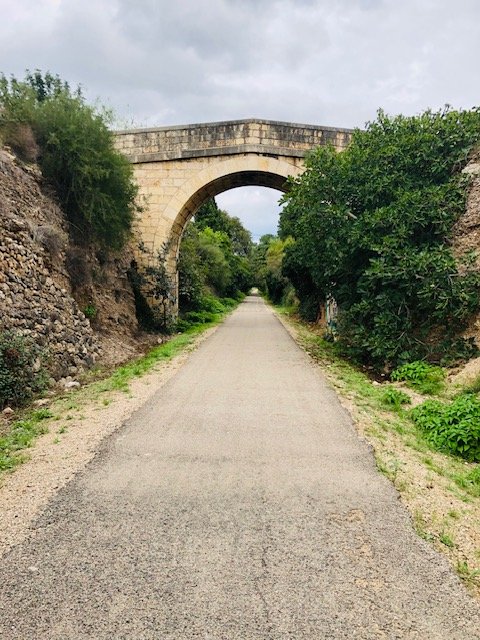Via Verde
Delta d’Ebre — Tortosa — Valderobles
Starting in Tortosa coming from Delta d’Ebre, I took. the Via Verde for the first time. I heard of this place over the years living in Barcelona, but I never got a chance to venture in this place and here I am at this time that I finally got a taste of it.
First, I stopped at Tortosa’s market and got a taste of their specialties. Then, I was able to track the trail from there and it is indeed a gradual climb and then, get to through the tunnels.
The Vía Verde de la Val de Zafán is a scenic, car-free cycling and hiking route that follows an old railway line from Tortosa (Catalonia) to Valderrobres (Aragón), passing through the stunning landscapes of Terres de l’Ebre and Matarraña.
Overview of the Route
Distance: ~ 50 km from Tortosa to Valderrobres (the full Vía Verde extends beyond Valderrobres to Puebla de Híjar, totaling ~130 km).
Difficulty: Easy to moderate (gentle climbs, well-maintained compact gravel).
Scenery: Mediterranean forests, rivers, viaducts, tunnels, and mountain views.
Route Highlights
Tortosa to Xerta (~15 km)
The route starts in Tortosa, a historic town on the Ebro River, then heads northwest along a flat, easy path. You’ll pass through orange groves and farmland, with occasional views of the Ebro. After about 15 km, you’ll reach Xerta, a charming riverside village with some cafés and rest areas.
Xerta to Bot (~25 km)
Leaving Xerta, the path begins to rise gently as you enter the Els Ports Natural Park region. This section is one of the most spectacular, featuring old railway tunnels (bring lights!), stone viaducts, and sweeping views of mountains and valleys. The town of Bot is a great place for a break, with local wineries and cafés serving Catalan and Aragonese specialties.
Bot to Valderrobres (~10 km)
The final stretch continues through the Matarraña region, often called the "Tuscany of Spain" for its rolling hills, olive groves, and medieval villages. You’ll pass through Cretes before arriving at Valderrobres, one of the most picturesque towns in Aragón, known for its stone bridge, medieval castle, and historic streets.
What to Expect
Tunnels: Several unlit tunnels, some quite long—bike lights are essential.
Surface: Mostly compact gravel, suitable for hybrid, gravel, or mountain bikes.
Facilities: Small villages along the way offer food, water, and accommodations.


